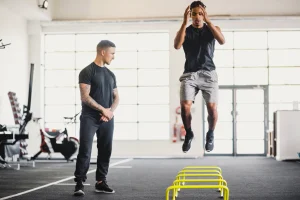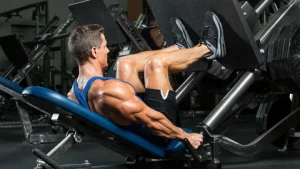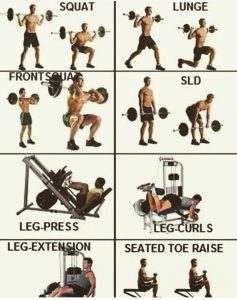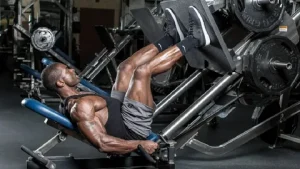An athletic trainer is someone who helps athletes stay healthy, recover from injuries, and improve their performance. They are experts in first aid, injury prevention, and rehabilitation. If you’ve ever wondered about the role of an trainer and how they help in sports, this article will give you all the details you need.
Understanding the Role of an Athletic Trainer
What do athletic trainers do, an athletic trainer works closely with athletes, coaches, and other medical professionals. They help prevent injuries, treat existing injuries, and work on getting athletes back to their peak performance. They are not the same as personal trainers, physical therapists, or doctors, though they do work alongside these professionals.
While personal trainers focus on fitness and physical conditioning, athletic trainers focus on injuries, prevention, and recovery. They are often seen on the sidelines during games, ready to help with any injury that happens on the field.
Who Is an Athletic Trainer? Defining the Profession
An athletic trainer is a highly trained healthcare professional. They go through special education programs and must pass certification exams. Their work involves treating injuries, creating injury prevention programs, and helping athletes recover. They are also experts in recognizing and managing injuries, especially during sports.
Key Responsibilities
Injury Prevention
One of the main tasks of an athletic trainer is to help prevent injuries. They create special programs that help athletes avoid common injuries. They teach athletes the best ways to warm up before exercising, cool down afterward, and use correct techniques during their sport. trainers also assess the risk of injury and make suggestions to improve safety, like recommending proper gear or adjustments to training routines.
Emergency Care
When athletes get injured during games or practice, athletic trainers are the first responders. They know how to handle injuries like sprains, strains, fractures, and concussions. They perform first aid and stabilize the injury until more advanced care can be provided if needed. Their quick thinking and actions are crucial in making sure athletes get the help they need fast.
Rehabilitation and Recovery
After an injury, athletes need help getting back to their sport. trainers design recovery plans that include exercises and stretches to restore strength, mobility, and flexibility. They monitor the athlete’s progress and make adjustments to the recovery plan. Athletic trainers also help prevent re-injury by gradually increasing the intensity of training.
How He Prevent Injuries and Promote Health

Athletic trainers play a big role in keeping athletes healthy. They focus on injury prevention by teaching the best ways to warm up and stretch. They also create programs that improve strength, flexibility, and endurance. When athletes follow these programs, they are less likely to get hurt.
Emergency Care: How Trainers Respond to On-Field Injuries
When an injury happens, trainers are the first to step in. Whether it’s a twisted ankle, a concussion, or a broken bone, they are trained to handle emergencies. Athletic trainers are skilled in first aid and can assess the injury right away. They know what steps to take, such as applying ice to a swollen area or helping an athlete get medical attention if needed.
Rehabilitation and Recovery: The Role of an Trainer in Healing
Athletic trainers help athletes get back on their feet after an injury. They create personalized recovery plans that are designed to meet each athlete’s specific needs. These plans usually include exercises to strengthen muscles, improve flexibility, and increase mobility. trainers track the athlete’s progress and adjust the plan to make sure the athlete heals properly and safely.
Athletic Trainers vs. Personal Trainers: What’s the Difference?
It’s important to understand that trainers and personal trainers are different. While personal trainers focus on helping people get fit and stay healthy, trainers work specifically with injuries. Personal trainers design fitness plans to improve strength and conditioning. On the other hand, trainers treat injuries, prevent them, and help athletes recover.
The Importance of Performance Enhancement and Injury Prevention
Athletic trainers help athletes improve their performance by ensuring they are not only physically ready for their sport but also that they stay injury-free. They teach athletes the best practices for training, which helps reduce the chances of injury. They also help athletes recover from injuries in a way that gets them back to peak performance levels.
Work Environments: Where Do They Work?

Athletic trainers can work in a variety of places. Many work with sports teams at the high school, college, and professional levels. They are often seen on the sidelines at games, ready to jump in if someone gets hurt. Other trainers work in hospitals, clinics, or physical therapy offices. Some work with military personnel or in corporate wellness programs, where they help employees stay healthy and prevent workplace injuries.
Skills and Qualifications Required to Be an Athletic Trainer
To become an athletic trainer, a person must have a special education. This usually means earning a degree in training from an accredited college or university. After that, they need to pass a certification exam to become licensed. trainers also need to have excellent knowledge of human anatomy, injury prevention, first aid, and rehabilitation.
Common Injuries Handled by Athletic Trainers
Athletic trainers deal with a wide variety of injuries, but some are more common than others. These include:
- Sprains and strains: Injuries to muscles and ligaments caused by overuse or sudden movements.
- Fractures: Broken bones that may require splinting or casting.
- Concussions: Head injuries that need immediate attention and careful monitoring.
- Tendonitis: Inflammation of tendons due to repetitive motion.
Trainers are trained to handle these injuries quickly and efficiently, ensuring that athletes get the best care possible.
How Athletic Trainers Improve Athlete Performance
Beyond injury prevention, athletic trainers help athletes improve their performance. They design training programs that increase strength, agility, and endurance. They also offer advice on nutrition and hydration to help athletes perform at their best. By focusing on both physical and mental health, trainers ensure that athletes are always in top form.
The Growing Demand for Athletic Trainers in Sports and Healthcare
The role of an athletic trainer is becoming more important as awareness of their benefits grows. More schools, universities, sports teams, and healthcare facilities are hiring trainers to take care of athletes and patients. The growing recognition of the value of injury prevention and recovery is making trainers an essential part of many organizations.
Challenges Faced by Athletic Trainers on the Job

While being an athletic trainer is rewarding, it comes with challenges. The job can be physically demanding, especially during long hours at games and practices. It can also be stressful, as trainers must make quick decisions during emergencies. Balancing multiple responsibilities, like training, injury care, and rehabilitation, can be tough at times.
The Future of Athletic Training: Trends and Innovations
As technology advances, so does the field of training. New tools, like wearable devices that track performance and recovery, are changing how athletic trainers monitor their athletes. There are also innovations in injury prevention and rehabilitation techniques. These advancements make the role of trainers even more vital to the sports and healthcare industries.
How to Become an Athletic Trainer: Education and Certification
Becoming an athletic trainer requires education and dedication. To start, you need to earn a degree in training from an accredited program. After that, you must pass the Board of Certification exam and meet state licensure requirements. Many trainers also continue their education throughout their careers to stay updated on the latest techniques and trends.
Athletic Trainers in Different Settings: Schools, Hospitals, and Beyond
Athletic trainers can work in many different settings. Many work in schools and universities, helping student-athletes stay healthy and recover from injuries. Others work in hospitals or clinics, assisting patients with rehabilitation. Some trainers even work in corporate wellness programs or with military personnel, offering injury prevention and rehabilitation services.
The Mental and Physical Demands of Being an Athletic Trainer
Being an athletic trainer requires both mental and physical stamina. On the job, trainers must make quick decisions, often in high-pressure situations. They also need to be physically fit to handle long hours on their feet and provide hands-on care during practices and games. The role can be challenging, but it is also highly rewarding.
Why Trainers Are Vital for Athletes’ Health and Success
Athletic trainers play a crucial role in ensuring that athletes stay healthy, recover from injuries, and perform at their best. They are experts in injury prevention, first aid, and rehabilitation. Without trainers, athletes would be more prone to injury, and recovery would take much longer. They are an essential part of the sports world, helping athletes succeed both on and off the field.
Conclusion: The Vital Role of Trainers in Sports and Fitness
In conclusion, athletic trainers are indispensable to the health and success of athletes. They help prevent injuries, provide immediate care, and guide athletes through recovery. Their expertise ensures that athletes can perform at their best, stay healthy, and recover quickly. As the demand for their services continues to grow, trainers will remain key players in the world of sports and fitness.







